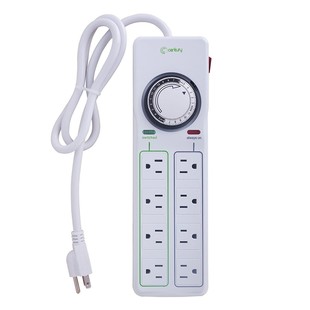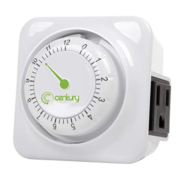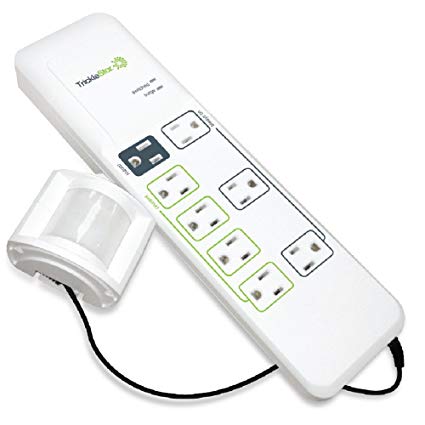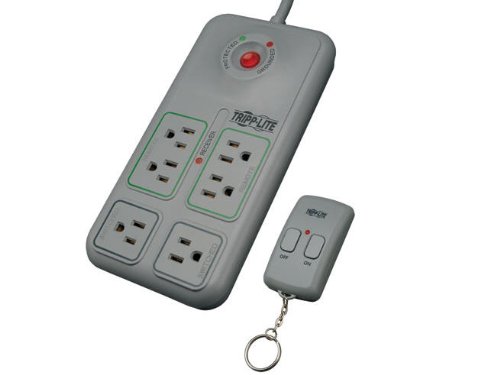Every year, American families waste billions of dollars powering idle electronics: leaving on the TV while no one watches, forgetting to turn off set-top boxes, charging electronic toothbrushes around the clock, etc. Although the individual draw from each of these appliances is relatively small, their energy consumption adds up over time, so that the average American household pays hundreds of dollars each year on power for idle devices. These power-sucking devices are nicknamed "vampire IT" because of how they stay alive, sucking power from a house's electricity supply, when they should have been turned off.
How do you avoid falling victim to vampire IT?
Ideally, everyone would turn-off and unplug each of their electronic devices when they are not being used. Unfortunately, that is not a convenient, or even practical, solution. Constantly unplugging and replugging every electronic device in a household would require a lot more time and energy than most people are able to devote towards sustainable IT practices. Additionally, even the few people that are willing to spend time on this would likely forget some of the time and there are many devices for which it is not always clear when you are done using them, such as chargers, fans, and some kitchen appliances. Fortunately, unlike the real monsters, you can defeat vampire IT rather easily with a simple, cost-effective tool: a smart power strip.
What makes a smart power strip smart?
Unlike conventional power strips, smart power strips automatically turn on and off devices automatically when they are no longer in use, saving household's money without requiring an alteration from individual's daily routines. There are several different types of smart power strips, and each one turns on and off devices based on a unique criteria that targets different vampire-prone appliances.
Scheduled Timer
Some smart power strips can be scheduled to turn on and off at specific times each day. These are great for devices that you use at the same time each day such as work computers and coffee machines. Scheduled timer power trips have the additional benefit of eliminating the time needed to start up devices at the start of each day. These can also be useful if you are on vacation and want to have a light on in the house at night, but do not want to leave it on all day. Keep in mind that many computers have built-in power scheduling. If this is true for your device, there is not need to spend money on an additional piece of equipment.
Manual Timer
In addition to scheduled timer power strips, there are also timer power strips that plug directly into wall sockets and turn on when you set a short-term timer and turn off when the timer runs out. These manual timer power strips are great for appliances that you only use for short periods of time and can forget to turn off such as bathroom fans, lights, and hair straighteners.
Current Sensing
 A current sensing power strip turns off when it is no longer being used and does not sense any current. This is great for electronics that are left on or plugged in for long periods of time, but stop using currents after a while like phone chargers and set-top boxes. They are especially great because you do not have to worry about manually turning on or off these devices.
A current sensing power strip turns off when it is no longer being used and does not sense any current. This is great for electronics that are left on or plugged in for long periods of time, but stop using currents after a while like phone chargers and set-top boxes. They are especially great because you do not have to worry about manually turning on or off these devices.
Occupancy Sensing
Occupancy Sensing power strips turn on when motion is sensed. These are more expensive than typical smart power strips, but can be useful security features when attached to outdoor lights. Many modern commercial buildings already have occupancy sensing lights, but these power strips allow you to incorporate that technology into your home. Additionally, some occupancy sensing power strips also have infrared sensors, so they can work with TVs and video games, even if no one is moving around the room.
Remote Controlled
Some power strips can be turned on and off with remotes and/or phone applications. These are useful for power strips that have a lot of related devices plugged into them that you can remember to turn off. For example, if your TV appliances (TV, set-top box, video game counsel, sound system, etc.) are all plugged into the same power strip, rather than turning off the TV, you can turn off the power strip with the remote and it will turn off all of the appliances. Additionally, the phone controlled power strips are helpful for electronics that you might want to turn on and off when you are not home, such as sprinklers and security cameras.
Note: The above pictures are for example purposes only and we cannot attest to their specific reliability or quality. To learn more about the specific product pictured and find its source, click on the picture.




